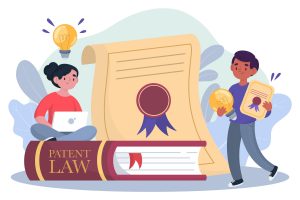The Patents (Second Amendment) Rules, 2020 (hereinafter referred to as the ‘amendment rules’) that came into force on November 4, 2020, primarily recategorized the Applicants and the fees paid by them for filing and prosecution of a patent. Presently, the amendment has classified applicants into two classes (i)natural person(s) or startup(s) or small entit(y)/(ies) and (ii) Other(s) alone or with natural person(s) or Startup(s) or Small entit(y)/(ies).
Effect of the Amendment Rules on Rule 7(3)
This recategorization allows small entities to claim the fee concession that was previously reserved for natural persons and startups. The amendment rules through Rule 7(3) further stipulate that in event of a transfer of an application from a natural person, startup or small entity to an ‘Other’ (not being a natural person, startup or small entity – generally referred to as large entities), the difference in scale of fees chargeable for both, is to be paid by the new applicant (the Others) with the request of such transfer owing to the change of status of the Applicant.
The amendment rules further clarify that when a startup or small entity ceases to be the same due to lapse of the period during which it is recognized as one by a competent authority or when it crosses financial threshold, it would not be required to pay the difference in scale of fees.
The recategorization of applicants to include small entity with startups and natural persons with lower filing fees, is bound to encourage more small entities to file patent applications as the new fee schedule reduces the burden of the small entities and makes the fee more accessible to them.

Implementational Barrier
The rationale behind Rule 7(3) of the amendment rules is to prevent any ‘Others – large entities’ from taking advantage of the fee concession that is exclusively available to natural persons, small entity and startups through transfers such as assignments. Though the rationale behind such amendment is ethical, there exists certain barriers that attenuates the implementation of the same.
Patent application and prosecution unlike other intellectual property prosecution, requires the Applicant to pay fees as per the stage of filing and the number of instances requiring payments are high, beginning from additional claims, requesting examination, extension of time, subsequent renewals and so on. Therefore, in the event of transfer of a patent application from a natural person, startup or small entity in favour of an ‘Other’, Rule 7(3) would mandate the ‘other’ to calculate the difference in scale of fees chargeable for both and pay the same along with request of such transfer. There exist practical difficulties for the ‘other’ to trace all payments made against the patent application and ascertain the difference in fee that is to be paid. Furthermore, there have been multiple revisions to the patent fee schedule over the years including the applicable subsidized fee which further adds on to the difficulty in calculating the difference in fees.
Recommendations
- In the last decade, the Patent Office has actively promoted the digitization of the process involved and especially considering the pandemic right now, complete digitization of records is necessary for the Applicants to easily access information regarding their patent applications which further strengthens operational efficiency of the Patents Office. Furthermore, the benefit of such digitization is that it allows the Patent office to save filing receipts with regard to the payments made against a particular patent application. Therefore, it is reasonable for the Patent office to send the applicant a consolidated fee transcript for the implementation of Rule 7(3).
- Additionally, the Patents portal can display either the difference in fee or the fee transcript at the time of filing the transfer, which would effectively satisfy Rule 7(3). If not, a provision must be available for the Applicant to request the consolidated fee transcript.
- Alternatively, if an objection is raised by the Patent office for not satisfying the requirement under Rule 7(3), such an objection must be accompanied with the consolidated fee transcript citing all such payments made against the subject patent application. This would allow the ‘others’ to constructively calculate and pay the difference in fees without any mishaps. Having such provisions in place prevent erroneous payments that would be made by the ‘others’ towards the Patent office. Moreover, providing a consolidated fee transcript at the time of filing the transfer prevents the redundant supplementary actions that would be required if an objection was raised under Section 7(3) for the lack of payment of difference in fee by the ‘others’.
It is a much-needed rule to maintain the sanctity of the present system and to prevent abuse of the same. However, the implementation of the rule must be viable and practical, the lack of clarity in the determination of the difference in fees, will lead to instances of erroneous payments to the Patents office. It is pertinent to note that it could be a genuine mistake on part of the Applicant, counsel or patent agent due to the lack of consolidated records with respect to the fees paid by them. Therefore, the recommendations stated above must be taken into consideration to save time and effort of both the Patents office and the parties involved in the transfer. Additionally, these implementation barriers are particulars that ‘others’ have to pay attention when involved in a transfer with a natural person, startup or small entities.
This article has been authored by Subhikssha K.
Editorial Staff
Editorial Staff at Selvam and Selvam is a team of Lawyers, Interns and Staff with expertise in Intellectual Property Rights led by Raja Selvam.
Don’t mess with the wrestlers! – WWE awarded an injunction and damages against unauthorised distributors in India
If you are a wrestling fan, you would have definitely heard of John Cena, Randy Orton, The Rock, Cm Punk, Undertaker, Shawn Michaels, The Great…
